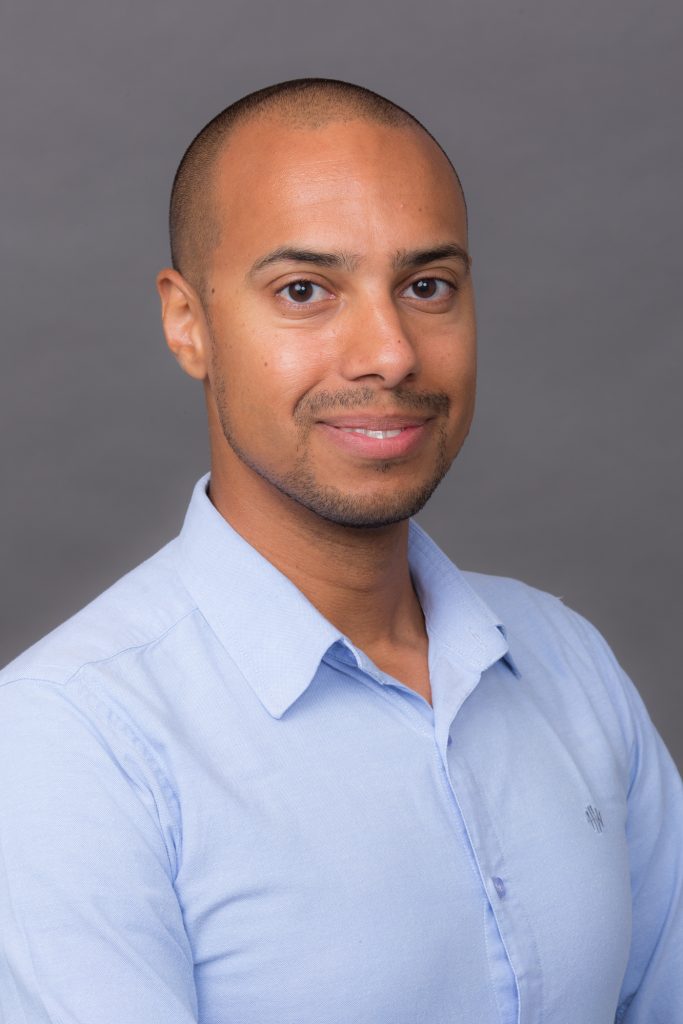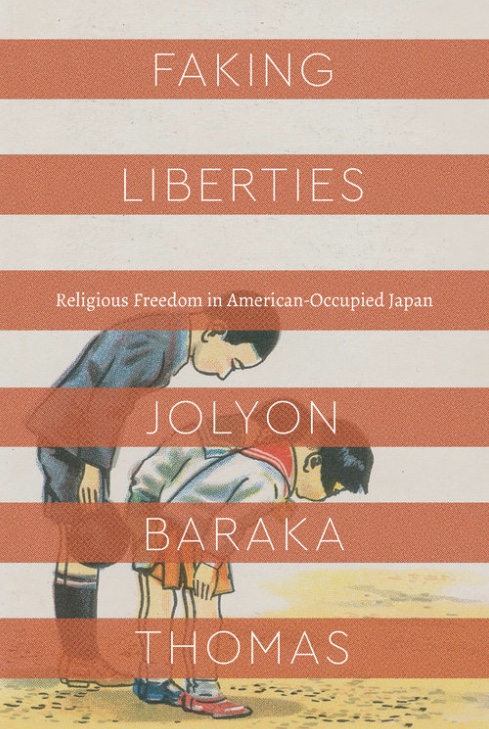Birdsall also wrote a review of Faking Liberties for The Review of Faith & International Affairs.
Religion & Diplomacy: At least in the United States, the popular perception of the US Occupation of Japan is that it replaced ‘State Shinto’ with real religious freedom. You regard this view as far too simplistic and actually quite problematic. Why?

Jolyon Thomas. photo credit: University of Pennsylvania
Jolyon Thomas: The phrase “State Shinto” makes it sound like Japan had a state religion, but political leaders never formally established Shinto in that way. From 1890 until the occupiers arrived in 1945, the constitution explicitly guaranteed religious freedom. People disagreed about how to balance the civil liberty of religious freedom with patriotic commitments, and some certainly called for making Shinto the national religion. But it was never a foregone conclusion that Shinto was, or even should be, Japan’s national religion. Aside from one or two people, nobody actually used the phrase “State Shintō.” Faced with these facts, the occupiers had to cook up a rationale for why their version of religious freedom was better than whatever already existed. They designated Japan’s secularist governance as illegitimate, which allowed them to present their version of religious freedom as “real.” The concept of “State Shinto” is the result of this triumphalist victors’ narrative.
R&D: A key sticking point for the American authorities was the debate over whether compulsory visits to Shinto shrines were “religious” and therefore a violation of religious freedom. What lessons can we learn about religious studies and/or religion policy from that debate?
Thomas: Japanese authorities had separated “shrine rites” from the category of religion, treating shrines as public monuments and shrine rites as expressions of patriotism. The distinction was always ambiguous, but Japan was hardly alone in this: lots of countries had—and many still have—civic rituals, material artifacts, and cultural repertoires that gesture to transcendent ideals or empirically unverifiable claims. (Think, for example, of the words “In God We Trust” on U.S. currency, or the widespread notion of the U.S. as premised on “Judeo-Christian” values.) Anyway, when scholars of religion writing in the 1930s and 1940s looked at compulsory shrine rites, they tended to see all ritual practices as religion. When Occupation officials asked these scholars for advice, the scholars therefore said that shrine rites were indisputably “religious.” The logical conclusion was that Japan had a state religion, but that was both legally inaccurate and historically misleading.
R&D: In the book I was surprised to learn that Japanese Catholics weren’t terribly bothered by compulsory shrine visits or the general conditions for religious minorities in pre-war Japan. Was that just a survival tactic or was pre-war Japan better on religious freedom than we give it credit?
Thomas: The evidence suggests that Catholics were concerned about compulsory shrine visits for students, and there were some high-profile scuffles between Sophia University (a Jesuit school) and the Japanese government over this issue. In 1936 the Vatican issued a formal instruction to Japanese Catholics that shrine rites merely constituted expressions of patriotism and therefore did not violate Church doctrine. It even said that Catholics should definitely visit shrines so as not to give the impression that they were less patriotic than other Japanese citizens! This was clearly a survival tactic, but note that the Church claimed to be accommodating itself to temporal governance, not to a rival religion. Generally speaking, I think that Japanese society had a healthy discourse about religious freedom that exhibited the tensions between liberty and security that characterize virtually all secularist states. The Catholic case simply shows that secularist governance has its own forms of coercion.
R&D: In the book you argue that the contemporary international conception of religious freedom is “an American export made in Japan.” How is that?
 Thomas: This is about human rights. You really only need the concept of human rights in interventionist scenarios when a state is not providing civil rights to citizens. The Japanese state couldn’t be trusted to guarantee religious freedom as a civil right, but the occupiers still needed to justify why they were in Japan enforcing that right. In a mostly non-Christian country, they couldn’t say rights were “god-given.” They therefore collaborated with Japanese elites to structure a new vision of religiosity as innate and universal, emphasizing the Protestant notion that “real” freedom constituted the right to choose a single faith. (Ironically, this framing forced people who had mostly nonexclusive approaches to religion to think in exclusivist terms.) The U.S. has subsequently used this language of religious-freedom-as-human-right—language born in the inherently interventionist Occupation—in both the Cold War and the War on Terror.
Thomas: This is about human rights. You really only need the concept of human rights in interventionist scenarios when a state is not providing civil rights to citizens. The Japanese state couldn’t be trusted to guarantee religious freedom as a civil right, but the occupiers still needed to justify why they were in Japan enforcing that right. In a mostly non-Christian country, they couldn’t say rights were “god-given.” They therefore collaborated with Japanese elites to structure a new vision of religiosity as innate and universal, emphasizing the Protestant notion that “real” freedom constituted the right to choose a single faith. (Ironically, this framing forced people who had mostly nonexclusive approaches to religion to think in exclusivist terms.) The U.S. has subsequently used this language of religious-freedom-as-human-right—language born in the inherently interventionist Occupation—in both the Cold War and the War on Terror.
I elaborate on this in a recent Twitter thread I wrote for Religious Freedom Day.
R&D: In the book you say you “personally celebrate religious freedom as an ideal” but also refer to “the inherently coercive nature of religious freedom.” So, are you celebrating coercion? How are we to reconcile this tension?
Thomas: Scholars of religion have thoroughly questioned the adjective “religious” as it appears in the phrase “religious freedom.” Just because a state has an abstract religious freedom guarantee doesn’t mean that one person’s model of religion won’t outweigh another’s when it comes to lived experience. Cops, legislators, and judges bring tacit understandings of what counts as religion to their decision-making, with concrete life-or-death consequences. But while scholars have complicated how operative notions of religion inform religious freedom talk, we haven’t sufficiently interrogated freedom.
Protecting freedom usually means mobilizing the coercive power of the state: police raids, arrests, convictions, sentences. I wanted to think seriously about that, but I also wanted to think about how operative models of freedom often privilege certain racial and religious groups over others. It is quite possible for religious freedom to exist in the absence of justice, and that is a huge problem.
R&D: You express skepticism of religious freedom as a corrective to oppressive regimes. Are we asking religious freedom to do too much?
Thomas: Religious freedom can be a tool of oppression because official distinctions between “religion” and “not-religion” can work to harm some groups. The Japanese state’s suppression of religious minorities in the 1920s, 30s, and 40s is illustrative here. Religious freedom was constitutionally guaranteed. But as soon as authorities had designated a group as a threat to public order, the religious freedom guarantee became meaningless and they could quash the groups with impunity. This same dynamic happens around the world today, and I stress that it is not limited to notoriously authoritarian regimes. When states deploy words like “cult” or “terror group,” they free themselves to suppress minority movements because they’ve already designated those groups as not being “real religions” and therefore not deserving of religious freedom. It’s far too easy for authorities to draw such lines to privilege the groups they like and marginalize those they don’t.
R&D: You challenge the common perception of good religions (e.g. Shinto) getting politicized or “hijacked” by nefarious forces (Imperial Japan). What’s a better way conceptualize and describe the use of religion by authoritarians and terrorists?
Thomas: Thanks to classic theorists of religion and society, many of us instinctively look behind surface behaviors to explain “what’s really going on.” This suspicious tendency has considerable interpretive power, but it is reductive. You must assume from the outset that you know what counts as religion, and you can then either situate it as a byproduct of base desires or as the deep motivator for economic or social action.
However, everything looks totally different if we examine how stakeholders make religion rather than how they use (or abuse) it. From this perspective, religion is not epiphenomenal. It is a real “social fact.” But religion conceived in this way also does not have an essence that can be sullied; it can’t be good or bad. The concept of religion-making dispenses with the notion of “real religion” and frees us to examine who calls what religion and with what political effects.
R&D: On balance you seem to see benefit in collaboration between policymakers and scholars of religion, but you are also have some reservations about such collaboration. What are your main concerns?
Thomas: Scholars of religion are particularly sensitive to religion-making, so we have a lot to offer policymakers. We can help them identify stakeholders’ unexamined assumptions about what counts as religion. We have tools for thinking about what happens when clerics and bureaucrats and journalists designate specific objects and actions as not religious. But when policymakers ask us for advice, we can unfortunately stray into prescriptive language about what counts as good or bad religion. That’s a problem for us, because our guild generally strives for doctrinal neutrality even if we never quite achieve it. It is also a problem for those we might advise, because like anyone else we can be attracted to fame and can sacrifice our commitment to theological neutrality as we work to establish our personal legacies. I think we must all be vigilant about any story, scholarly or otherwise, that assumes a good/bad religion framework.
R&D: You are a professor of religious studies and you readily concede that members of your guild are not merely neutral observers of religion in the world. What should policymakers and other practitioners keep in mind as they solicit the advice of scholars of religion?
Thomas: Every policymaker interested in religious freedom should have a roster of religious studies experts on hand, but they should know that scholars of religion don’t typically like simple solutions or undefined terms. Policymakers are usually moving fast, so they don’t have a lot of time to quibble over definitions. But if practitioners move too quickly to promote religious freedom without identifying how different stakeholders are using the operative terms, they run the risk of enacting policies that privilege those with the loudest voices or overlook those who need the most help. They might focus on who has a recognizably religious identity without thinking about who has the greatest need for assistance. That’s why I said that we have a problem if the pursuit of freedom happens at the expense of justice. Scholars of religion can help ensure that policymakers’ promotion of religious freedom enables just outcomes rather than the opposite.